Garmin Instinct vs Garmin Fenix 6: which is best?
The Garmin Instinct and the Garmin Fenix 6 are two of the best-selling sports watches but which is the best one for you?
Garmin’s Instinct and Fenix watches were launched in 2017 and 2019, respectively. Some runners and hikers might consider both to be old-tech, but they are still excellent examples of activity trackers done well which is why we’ve written this comparison. If you want to read more about each particular watch, you’ll more details here: Garmin Fenix 6 review, and the Garmin Instinct review.
Between us, Jake and I both own these watches and we’ve tested them inside out which means you’re getting a real user perspective.
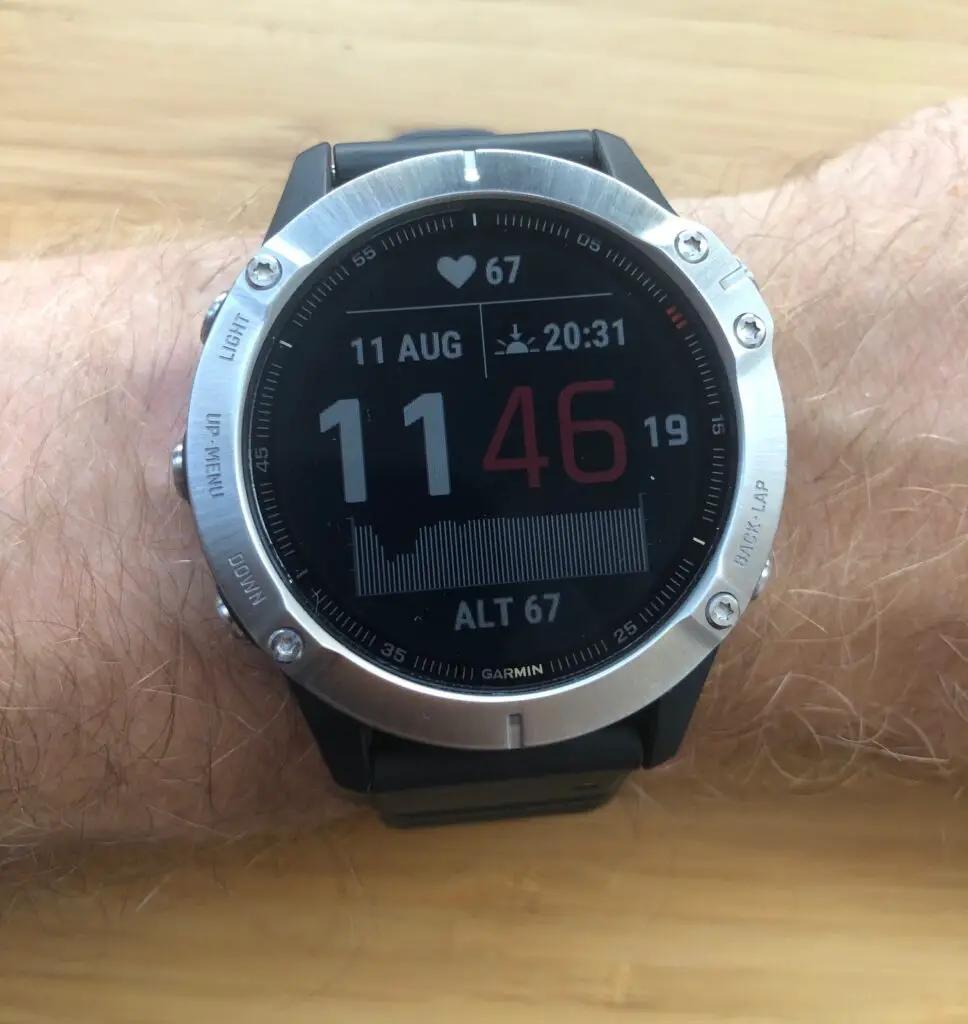
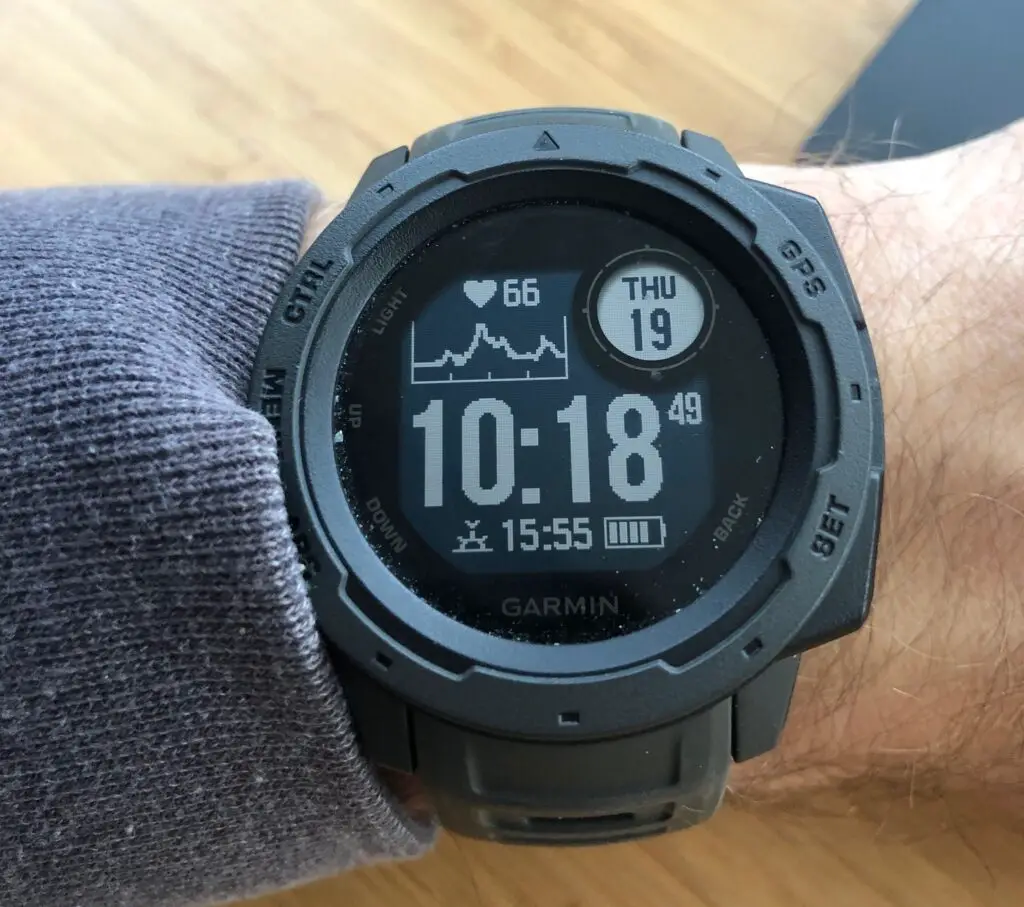
The obvious differences between the Instinct and Fenix 6
The Garmin Instinct vs Garmin Fenix 6 debate has been raging since the introduction of the latter back in 2019. But instead of getting involved in the arguments, we’re first going to outline the key differences between the two.
Here are some of the key differences between the two watches when viewed from the Fenix’s perspective::
- Design: It has a larger and more high-resolution display compared to the Instinct, and it is also available in a wider range of sizes and styles. The Instinct is designed to be more rugged and durable, with a fibre-reinforced polymer case and a scratch-resistant display.
- Features: Offers a wider range of features and capabilities than the Garmin Instinct (more on this below). A prime example is it has advanced training metrics, onboard mapping tools, music storage, and longer battery life. The Instinct still offers GPS tracking and a range of activity-tracking features, but the interface is simpler and the watch has a shorter battery life than the Fenix 6.
- Price: Is generally more expensive than the Instinct, due to its wider range of features and capabilities.
- Battery Life: Has a longer battery life than the Instinct. Depending on the model, it can last up to 50 days in smartwatch mode, whereas the Instinct can last up to 14 days in battery-saver mode. The obvious point to note is the more you use either watch for sports activities, tracking, etc the shorter the battery life. On the whole, Jake and I were pretty impressed with the battery life on both devices.
- Navigation: Features more advanced navigation features than the Instinct, including onboard maps and the ability to create and follow routes. The Instinct has a basic navigation system that can track your route and guide you back to your starting point.

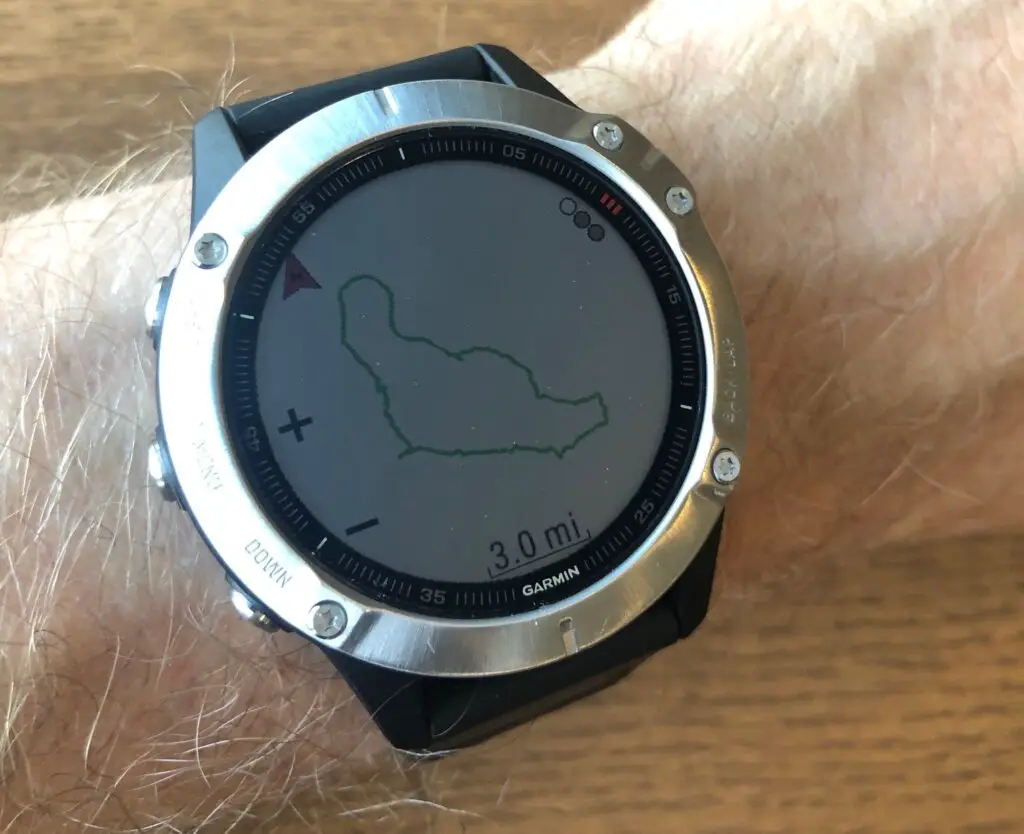
Then, there’s the size. The Fenix 6, which we rate as one of the best GPS hiking watches, comes in three size options: 42mm, 47mm and 51mm (if you opt for the 6X version). The smaller case of the Garmin Instinct, coming in at 45mm, makes it more streamlined and suitable for those of you looking for a less ostentatious piece of arm bling, but the screen is far less readable at a distance.
Fenix 6:
- Fenix 6S: 42mm case size
- Fenix 6: 47mm case size
- Fenix 6X: 51mm case size
NOTE: the Fenix 6X also comes in a Pro Solar Edition, which is slightly larger again due to the addition of a solar charging lens/panels arrayed around the face.
Garmin Instinct:
- Instinct: 45mm case size
- Instinct Solar: 45mm case size
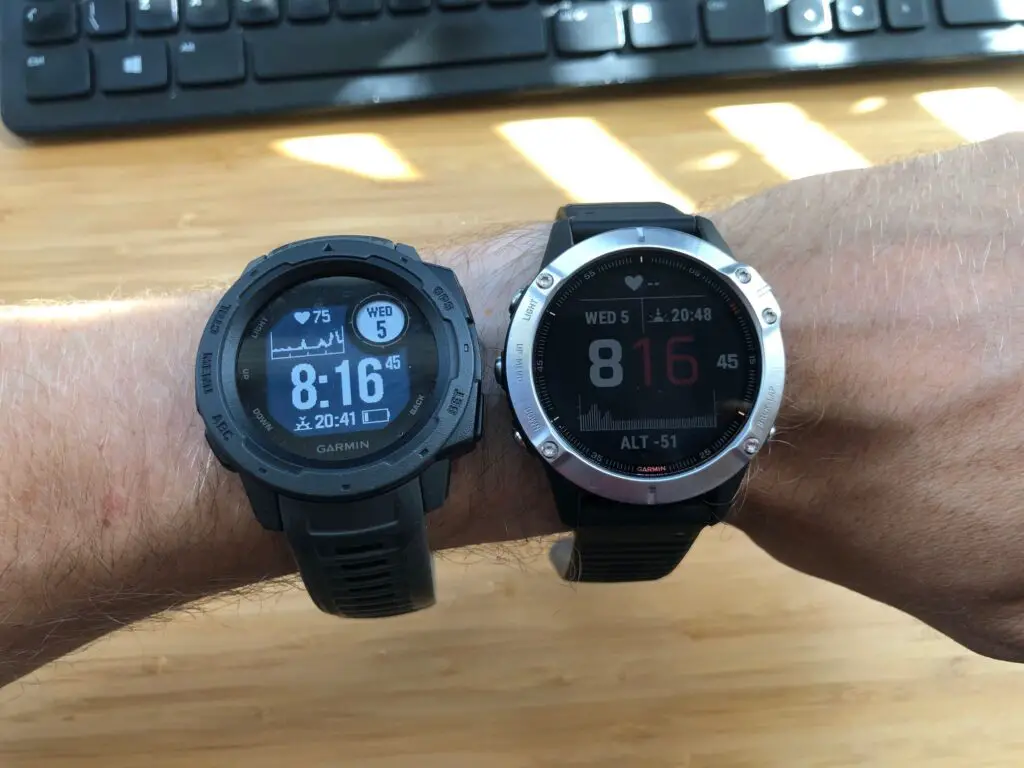
Both the Fenix 6 and the Instinct have a rugged and durable design, with a fiber-reinforced polymer case and scratch-resistant display. However, the Fenix has a larger and more high-resolution display compared to the Instinct, which may be a consideration if you prefer a larger screen. As mentioned above, the Fenix 6 comes in a wider range of sizes and styles to fit different preferences and use cases, whereas the Instinct is available in one size option. The Fenix has a 260 x 260 pixel face, whilst the Instinct has a much smaller (128 x 128 pixel) monochrome display. In addition, it has a far better resolution – the Instinct’s display looks clunky when placed side by side with its bigger sibling (especially if your eyesight is as bad as mine!).
Pricing is another area where these two devices deviate – the Fenix costs around £350, and the Instinct is currently selling for around £179 which is a pretty big gap and one you need to consider when you start looking at the two.
To my mind, the third key difference – styling – is less important, but I have to say the Fenix is more attractive. Whilst both are rugged watches that can handle the knocks that come with any kind of sports activity, the Fenix is most definitely easier on the eye.
Features
- Both watches support the use of Bluetooth and ANT+
- Some Fenix 6 models support WiFi (the Basic model we reviewed does not)
- Garmin Pay is not available on the Instinct
- Both watches can use the Garmin Connect and Earthmate apps
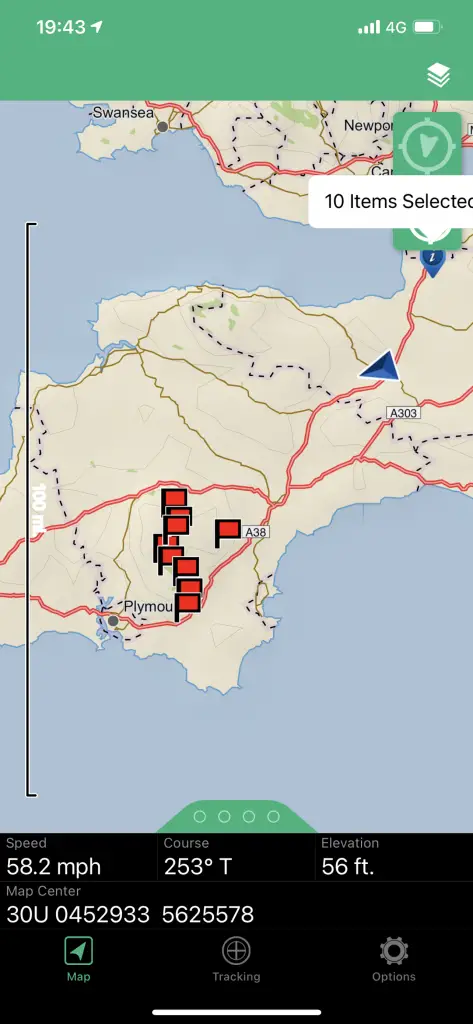
Given the two price points, you can work out that the Fenix 6 has more features available. And you’re right.
Here are some of the activities that are present in the Fenix 6 but not in the Instinct:
- Skiing and Snowboarding: has specific modes for tracking skiing and snowboarding activities, including metrics like speed, distance, and vertical drop.
- Golf: has a dedicated golf mode that can track your shots, measure the distance to the hole, and provide other golf-specific metrics.
- Advanced Running Metrics: offers more advanced running metrics compared to the Instinct, including ground contact time balance, stride length, and vertical oscillation.
- Triathlon Mode: features a dedicated triathlon mode that can track multiple sports in a single workout, including swimming, cycling, and running.
- Rowing: has a specific mode for tracking rowing workouts, with metrics like stroke rate, stroke distance, and total strokes.
- Tactical: includes tactical features like night vision mode, kill switch, and stealth mode, which is designed for military and law enforcement personnel.
These are just a few examples of the additional activity tracking features that are available on the Fenix 6 compared to the Garmin Instinct. However, it’s worth noting that both watches offer a core range of activities that will help you monitor training progress and achieve your fitness goals.
Connectivity
Whilst both watches support ANT+ and Bluetooth, the Fenix offers a wider range of sports activities to choose from, more apps, and enhanced connectivity. Both watches can connect to external Heart Rate Monitors, your phone (we recommend using the Garmin Connect app), and some compatible gym equipment such as running machines.

Accepting/rejecting calls
One feature missing from the Instinct is the ability to accept or reject a call with a text message. What’s more, this function is only available to the Fenix 6 when connected to the Android version of the Gamin app. The omission from the iOS app is a shame as it would be useful to let the caller know I’m aware and will ring them back later, without having to send them to voicemail.
Weather app
Both watches feature a weather app, which I find particularly useful when out running, or hiking on some of the wilder routes the UK has to offer. Being able to see the shifting weather patterns ahead of time allows to me decide which gear I need to carry, and when to pitch a tent if I’m on a hike.
NOTE: the weather app only works when connected to a smartphone.
Specific workouts like hiking
I hike a lot. I also run, a lot. Both watches cater to these two sports activities, but when it comes to the sheer number of other options available the Fenix wins hands down because it has many of the tracking features I need for my trips and expeditions.
Pulse Ox meter
The Garmin Pulse Ox meter is a tool used to indicate how much oxygen is coursing through your veins at any given time. This a useful feature as it gives you an insight into how well your body is moving oxygen from your lungs to the body’s cells.
NOTE: This feature is not available on the Instinct.
The Fenix 6, when linked to Garmin Connect, provides a very pretty, and useful display showing your Pulse Ox, and it’s not to be discounted as just another gimmick. Having had a checkup with my doctor, I cross-referenced his readings with those on my watch and found them to be surprisingly accurate, providing me with a good picture of my circulatory health. Thanks, Garmin.
Heart Rate Variability
Heart Rate Variability, or HRV for short, is the time variation between beats of the heart. For the most part, an HRV of 25 – 45 ms for people aged 60+ and an HRV of between 55 – 105 for 20 – 25 year olds is normal.
Garmin uses personal data to set an expected HRV, but the actual figures can vary depending on your overall health and fitness.
Both watches have an HRV (Heart Rate Variability) app that can be used to measure your heart rate variability throughout the day. Heart rate variability is a measure of the variation in time between each heartbeat, and can be an indicator of your overall health and fitness.
The HRV app on both watches can track your HRV over time and provide insights into how your body is responding to stress and other factors. You can view your HRV data on the watch itself, or sync it with the Garmin Connect app to track your progress over time and get more detailed insights into your heart rate variability.
NOTE: the accuracy of HRV measurements on the Instinct (or any wearable device) can vary depending on a variety of factors, including your age (see above), fitness level, and how the device is worn. We recommend you have a good talk with your healthcare professional if you have concerns about your heart health or are using HRV measurements to guide your training or fitness routine.
Battery life
The Garmin Instinct has a shorter battery life with up to 14 days in smartwatch mode and up to 40 hours in GPS mode. Why? Because it has a smaller cell and the ‘always-on’ functions hit it hard in a greater power draw. Also, I find it has more resistance to the effects of cold and hot temperatures, shock, and water ingress.
Considerations
If you prioritize advanced features and customization options, the Fenix 6 may be the better choice for you. It offers a wide range of activity-tracking features, including GPS navigation, a barometric altimeter, and advanced metrics for running, cycling, and swimming. The display is larger and has a higher resolution display compared to the Instinct, which can be helpful when viewing maps and tracking your progress (see the note above regarding the pixels).
If you prioritize battery life and durability, the Instinct makes a far better choice for your money. The Instinct has a longer battery life, with up to 50 days in smartwatch mode and up to 40 hours in GPS mode. It is also built to withstand extreme temperatures, shock, and water, making it a great option for rugged outdoor activities.
But if you’re looking for a simpler, less demanding watch that has a great battery life, can track the most common sporting activities, and won’t put a huge dent in your wallet, then choose the Instinct.
Ultimately, the choice between these two watches for hikes and treks comes down to your specific needs and preferences. If you’re looking for a watch with advanced features and customization options, and don’t mind sacrificing some battery life, the Fenix 6 is a great option. If you prioritize durability and don’t need as many advanced features, the Instinct may be the better choice.




